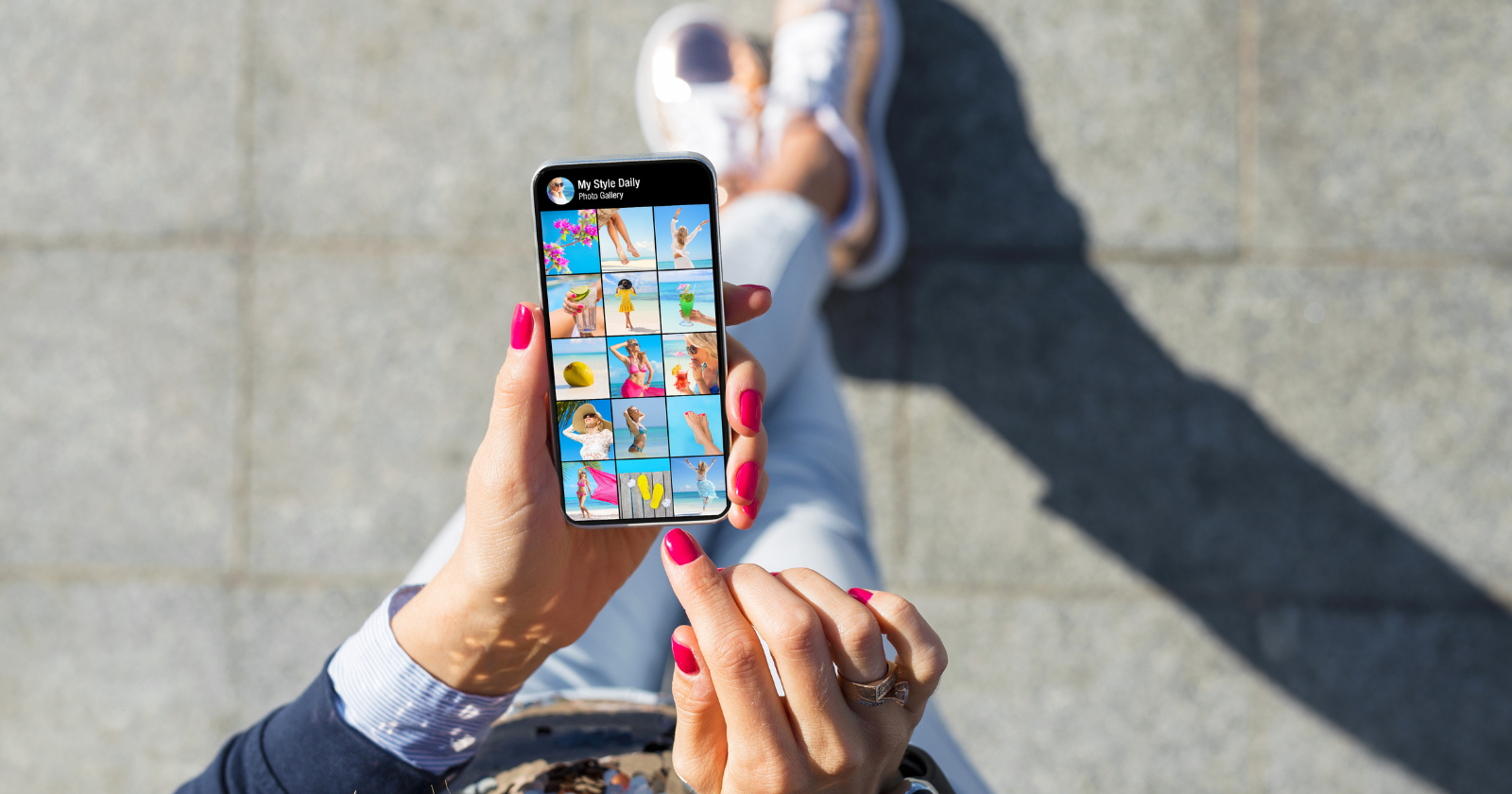Humans are visual-oriented beings.
We use five critical senses daily to solve problems and get through our daily lives, each of which helps humans significantly.
But vision is responsible for 80% of everything humans learn, and similar numbers are likely for most animals with developed brains.
That’s why visual-rich media – photos, images, videos – have a huge impact on the success of written content and overarching content marketing strategies.
Visuals Communicate Ideas Faster & Easier
Eye-catching visuals captivate us; then, we use that focus to better understand the message that visual conveys – and who is behind the message.
This is why having visuals is so important in branding and marketing.
Visuals do the same for leads, sales, and the forces that drive them.
People consistently hold the things that are most attractive in life – those people, places, and products – in high regard. They’re sought after with great pride and determination. They’re popular and in demand. And they’re visually appealing, for better or worse.
Build your content the same way.
Start by properly planning your content with its messaging, audience, and goals in mind.
But never ignore the need for compelling visual content to supplement – or complete – each piece of content.
From the beginning, you should consider what kinds of images, infographics, videos, animations, and any other rich media could be added to your content to enhance messaging and further ensure it resonates with users.
Telling your audience is one thing; showing it while doing so makes the world of a difference.
There are many visual-rich media types that will improve your content exponentially. And the numbers support it.
- Web content containing visuals like images or videos performs better – on average, receiving up to 94% more views.
- Emails with videos have a significantly higher click-through rate than those without.
- Infographics can increase website traffic by 12%.
- Tweets with images or videos get, on average, a 35% or 28% increase in retweets, respectively.
- And more than 100 million hours of video are watched on Facebook daily – a platform with over 2.9 billion users.
Most of all, let’s not forget to lean on science.
Solely reading words can only go so far in storytelling; visuals are processed 60,000 times faster than text, so including them in your content can help pique your audience’s attention quickly.
Looking beyond blanket statistics, here are seven evidence-based reasons why content needs compelling visuals to fully and efficiently convey a message, tell a story, and create a connection.
1. Humans Prefer Visuals
People are visual creatures by nature.
It’s not just because of our short, modern-day attention spans that we tend to prefer video, animation, and imagery over text (because of how much faster and easier we can consume it).
It’s also because we can obtain and retain this information faster, better, and for longer.
Visuals are easier to digest, as well as easier to remember.
And they’re more available now than ever before.
With the growth of multi-device usage for people across the planet, it’s no surprise visual content has become vital to success.
It’s probably also why, in 2022, internet traffic from videos made up 82% of all global web traffic on Earth.
In today’s digital climate, we’re more likely to be quickly captivated by an image or video than by words on a page. That’s likely how humans have always been, at least since their introduction to the video.
There has been a dramatic shift in content (and content preferences) with the growth of faster phones, better picture quality, faster internet connections, and more content and content types available.
We can expect this to continue trending that way.
2. Visuals Create Connections
The right visuals can create strong connections.
With the fast-paced lives many people live, it’s harder now than ever to capture – and retain – attention spans. We need all the help we can get to ensure people are actually absorbing (watching, reading, hearing, etc.) the content we produce.
Visuals help us make those connections.
These connections – built upon emotion and messaging – become stronger with creative, stimulating visuals that are the backbone of marketing success.
Not only do visuals allow brands to enhance and clarify their messaging, but they also help solidify brands’ identities.
This is how brands become “household names,” recognizable anywhere in the wild.
And it’s why all digital assets a company owns should be branded before publication.
That way, when they are re-shared across the web, the right brand gets the credit for them while building that connection with its audience.
3. Visuals Generate More Organic Visibility
As Google search evolves, so do the ways people search and interact with it.
There are now more search verticals at the forefront of search.
Now more than ever, users know the varying ways to use search to their advantage depending on the subject they’re searching for and the stage of intent they’re at.
Both factors determine the results we see.
Marketers should be considering those (and other distinguishable factors) and the best way your messaging can be displayed in terms of how it appears on:
- Your webpages.
- Social media.
- Search.
When snippets have compelling visuals, they perform better. That’s why CTRs are higher for content that contains images.
Google is also continually transforming how its platform works and is presented, and, in turn, how humans interact with it is also transforming.
Since search results have become more personalized and dynamic, user interaction has changed. Visuals stand a better chance to be seen since their surface area has also increased across multiple search verticals.
That includes Google Discover, a curated news feed of online content delivered to Google users that the company’s automated systems think would be interesting and appealing to specific users.
And while many of the best practices for showing up in Discover are still up for debate, using high-quality imagery in pieces of content is a recommendation Google has pointed towards on several occasions for showing up – and earning clickthroughs – in Discover.
In addition to the uptick in searches coming from mobile devices, voice search continues to grow, too.
These types of searches represent additional chances for a brand’s rich media to show up, especially considering search results commonly vary based on device.
Many eyes also see a specific piece of content through social media shares, emails, and more, including the referral visits attributed to those backlinks.
4. Visuals Help Capture Short Attention Spans
While obvious, it’s probably the most important one on this list.
No matter how you slice it, humans don’t just want visuals – they need them.
The average person can get distracted (or bored) within a few seconds. That doesn’t give you much time to grab someone’s attention.
Video, infographics, and relevant, high-quality photos can help break through the noise and reach those with short attention spans.
Make sure you capture your audience’s attention fast!
But don’t stop there.
Ensure you publish and share useful content for your audience that is valuable and beneficial to them. Otherwise, you’re going to lose them.
5. Visuals Are More Memorable
Visuals don’t just stand out at first sight; they’re also easier to remember.
Add visuals to well-researched and useful content, and that content is much more likely to resonate with its audience over time.
The message being communicated in any piece of content – even its headline(s) – can be enhanced by relevant and memorable supplemental rich media.
Adding visuals to any presentation helps humans’ ability to recall it up to several days later by 65% and by 80% to recall it within just a few hours.
Remember when we used flashcards and other visuals in grade school to help us learn new topics? That’s because so many of us are visual learners who can comprehend and retain information better, faster, and easier through the use of visual aids.
This is the same.
Most humans retain visual information much better, clearer, and longer than we can solely with written words.
And, those visual connections often remain in place for a long time – sometimes for entire lives.
6. Visuals Can Help Drive Leads
Visual content can lead to increased engagement – and more engagement often means more leads.
Match this concept with a clear and consistent brand tone, and one of the most critical components of your content strategy will be in place.
But all aspects of the strategy need to make sense to generate real, quality leads. That includes using high-quality and relevant rich media to support your message and connect with your audience.
Use visuals as the tool they are and explain common questions or unique ideas efficiently.
There’s a reason visual assets in content marketing continue to increase yearly.
Plenty of evidence points to people’s favoritism for watching a video versus reading a bunch of text when learning about a new product or service.
Relevant rich media matched with the right written content can have incredible results. And, to drive leads through content marketing efforts, that should be the goal every time.
Beyond just including relevant visuals with content is the aspect of digital quality. This matter greatly as well.
The quality of product images is critical when people are browsing (then selecting) a product and will impact a user’s decision-making along the way.
Most people will see page image(s) before recognizing and reading words, including a product title.
Depending on that first-impression visual, they will either be turned on or off, then decide to stay, go, or buy/convert.
7. Content Can Be Repurposed Into A Variety of Rich Media Types
One challenge all marketers face is how to keep content fresh without too much reoccurring overhead (editing, shooting, color-correcting, etc.) – and without boring your audience by beating a dead horse.
That’s where repurposing content comes in.
There are various ways to repurpose data that is optimized for delivery on specific platforms/devices and for specific audiences, including various content forms for different stages of intent that make it possible to reach customers in all different stages of the buyer funnel.
Don’t be afraid to take survey data, write a blog post about your findings, then turn it into a pie chart – then an infographic, an animated video, and a meme, before talking about it on a podcast.
Get the most out of your content by repurposing it in a way that makes the most sense for both your content and audience.
Conclusion
It sounds dramatic, but visuals make a huge difference in the value of content.
Visuals affect how people digest content and how they understand it, retain it, and even engage with it.
Visuals also affect how that content appears in organic search and how people react to it.
Use this to your advantage and help people (and search engines) better understand your content more quickly and efficiently by using images and other visuals to enhance your messaging.
The numbers show just how much better rich media fares in the wild. Use it to your benefit, save money, and increase your brand following.
More Resources:
- 10 Big Ways Infographics Benefit Your Content Strategy
- 23% Of Small Businesses Say Visual Content Is Most Effective
- Content Marketing: The Ultimate Beginner’s Guide
Featured Image: Kaspars Grinvalds/Shutterstock





